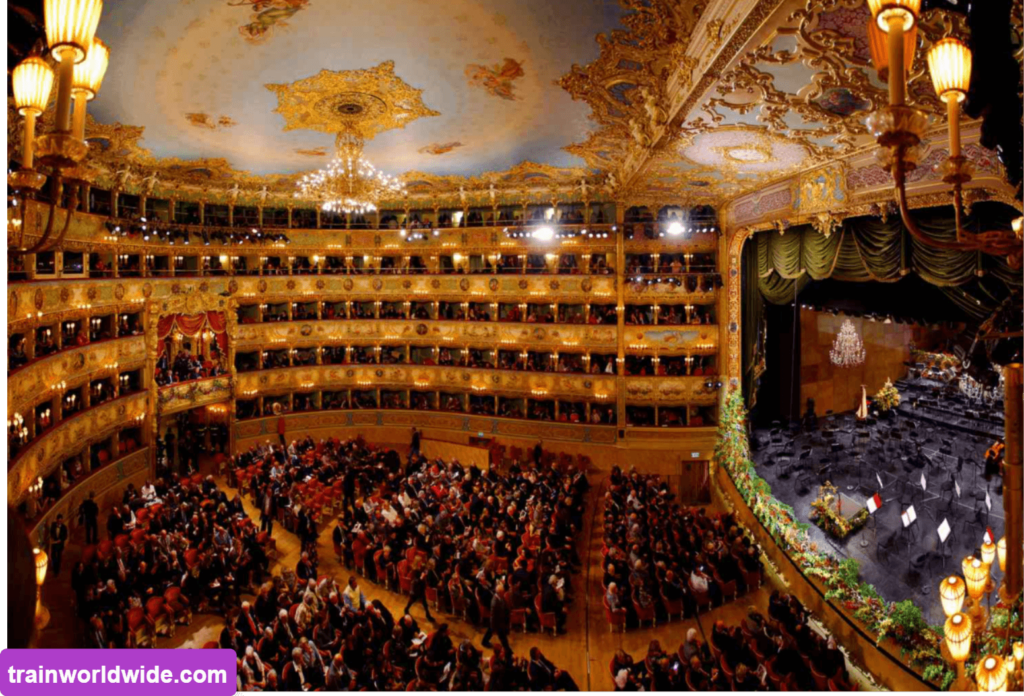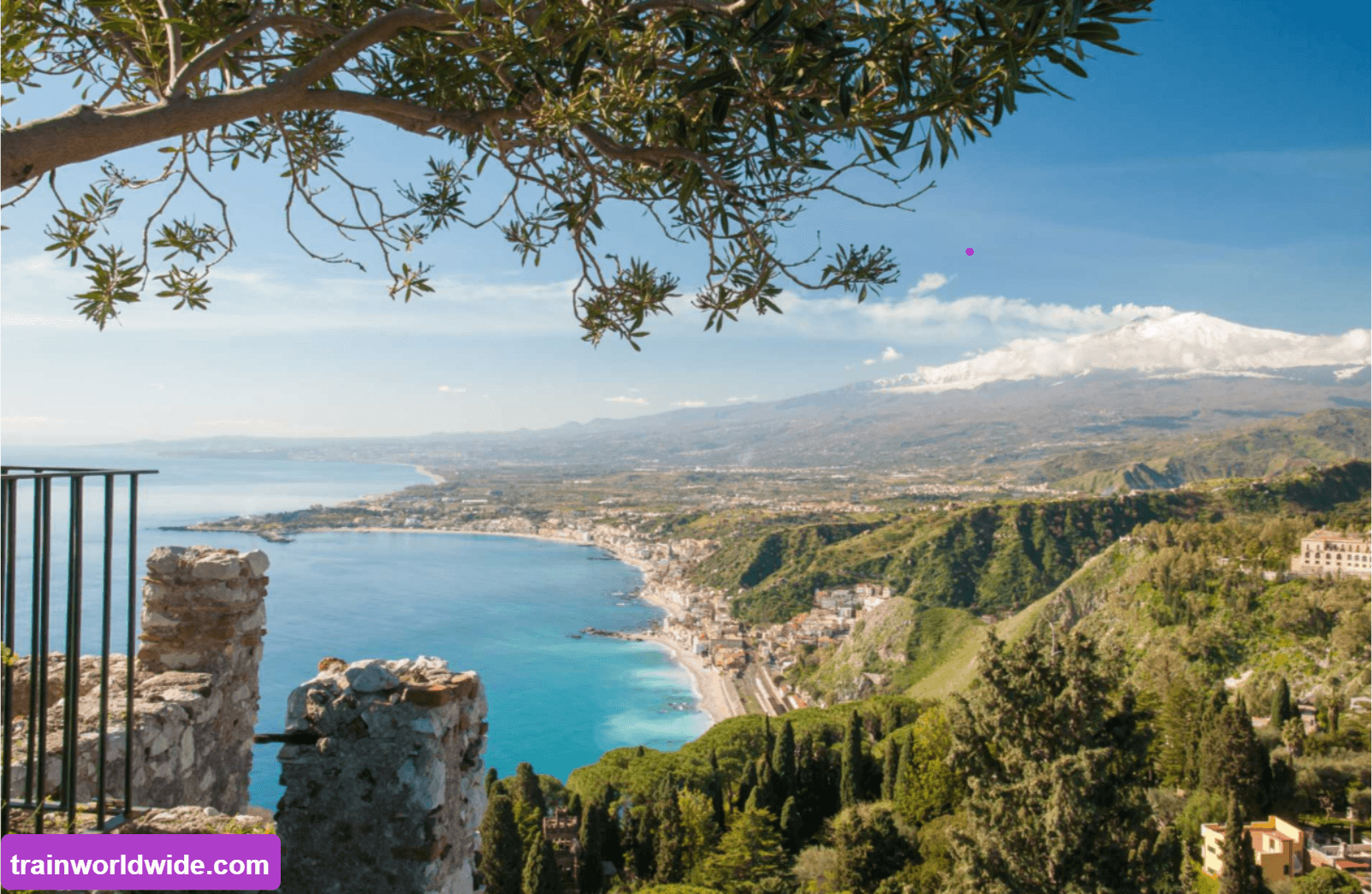The captivating and enigmatic island of Sicily has enchanted readers, adventurers, and explorers from ancient times up to the present day. For years, I dreamed of exploring Sicily, and when the opportunity finally came, it surpassed all my lofty expectations.
Curious about Italy’s southernmost island?
Here are some intriguing facts about Sicily to ignite your excitement for your upcoming journey!
A UNESCO World Heritage Site
From above, Ragusa Ibla in Sicily appears as one of the Baroque towns that form a UNESCO World Heritage Site, showcasing the island’s rich history and unique charm.
Please note that some links in this post may be affiliate links. If you make a purchase through these links, we may earn a small commission at no additional cost to you. For more details, please review our disclosure policy.
The Sicilian Language
The Sicilian language remains actively spoken on the island.
Although Italian is the official language of Sicily today and most locals converse in Italian, Sicilian continues to be widely used.
If you venture beyond the usual tourist spots in Sicily and explore smaller towns, you’ll likely find Sicilian written on menus and signs!
Sicilian is not merely a dialect of Italian but a distinct language.
Greek Ruins in Sicily
Some of the best-preserved Greek ruins outside Greece are located in Sicily.
The Valley of the Temples near Agrigento stands out as exceptionally well-preserved and is much less crowded compared to similar sites in Athens.
For history enthusiasts, this is often one of the most fascinating facts about Sicily!
The Famous Novel Set in Sicily
One of Italy’s most renowned novels is set in Sicily.
Giuseppe Tomasi Lampedusa’s “The Leopard” takes place in 1860s Sicily during the unification of Italy.
The novel, narrated from the viewpoint of a Sicilian prince experiencing a rapidly changing society, explores the cultural shifts as Sicily integrated into the unified Italy.
The author, a descendant of the characters in “The Leopard,” presents a compelling story, even if some details are debated by family members. Despite a slow start, the novel offers valuable historical and cultural insights about Sicily.
Sicilian Wine and Chocolate
Sicily is renowned for its exceptional wines.
The island’s volcanic soil and Mediterranean climate are perfect for cultivating wine grapes. Key wine regions include Mount Etna, Noto, Faro, and Vittoria.
Modica, a UNESCO-recognized Baroque town in the Val di Noto, is famous for producing some of Italy’s finest chocolate.
Sicily’s Past as an Independent State
Sicily once operated as an independent state.
In the past, Sicily governed itself as the Kingdom of Sicily.
… but it has also been under the rule of many prominent European empires.
These include the Ancient Greeks, Byzantines, Romans, Arabs, and Normans, among others.
Autonomous Region of Italy
Sicily remains an autonomous region of Italy.
Although many of its autonomous rights are not actively exercised, they still exist in theory.
Mount Etna: Europe’s Tallest Active Volcano
Mount Etna is Europe’s highest active volcano.
It is highly active, with frequent eruptions and seismic activity observed annually.
Feeling adventurous during your Sicilian visit?
Climbing Mount Etna could be a thrilling option!
The Largest Island in the Mediterranean
Sicily is the largest island in the Mediterranean Sea.
Sardinia ranks as the second-largest island.
Archimedes: A Sicilian Genius
Archimedes was born in Sicily.
The renowned Greek mathematician was born in Syracuse around 287 BCE and spent much of his life in the city.
Cannoli: A Sicilian Delight
For food enthusiasts, Sicily is the birthplace of cannoli.
Originally from Palermo and Messina, these crispy, tube-shaped treats are synonymous with Sicily.
While cannoli are widely available throughout Italy, they are generally at their best when enjoyed in Sicily.
Unique Sicilian Pizza

Additional foodie facts: Sicily features its own unique pizza variety.
Sfincione, or Sicilian pizza, is characterized by a thick crust and generous tomato topping, sometimes including anchovies, onions, and herbs.
Unlike Neapolitan pizza, sfincione typically lacks a cheese layer over the tomato sauce, though cheese may be added as a topping.
Emigration from Sicily
Sicily has experienced significant population shifts due to emigration over the years.
Between 1876 and 1915, approximately 1.4 million Sicilians emigrated, many settling in the USA and contributing to the Italian diaspora on the east coast.
Another 500,000 Sicilians are estimated to have left the island after World War II.
The reasons for this exodus are multifaceted, including economic challenges, military conscription, and natural disasters, all of which have left a lasting impact on the island.
Current Population of Sicily
Today, Sicily’s population is around 5 million.
For comparison, Rome has a population of just under 3 million!
Surrounded by Three Seas
Sicily is bordered by three seas.
Depending on where you visit on the island, you may swim in the Ionian, Tyrrhenian, or Mediterranean Sea.
Regardless of the sea, all are stunningly beautiful.
The Sicilian Mafia
The Sicilian mafia is not a Hollywood creation.
The concept of the Sicilian mafia, or Cosa Nostra, is rooted in history and predates Hollywood portrayals, such as those in “The Godfather.”
Despite the popular image, the Cosa Nostra has caused real suffering for many Sicilians. The island continues to strive towards distancing itself from this criminal organization.
Italy’s Largest Opera House

Sicily boasts the largest opera house in Italy.
Palermo’s Teatro Massimo is the largest opera house in Italy and the third-largest in Europe, depending on the criteria used.
The Origin of the Sonnet
The sonnet originated in Sicily.
Giacomo da Lentini is credited with creating the sonnet in 13th-century Palermo!
This fact stands out as particularly surprising given how closely we now associate sonnets with Shakespeare.
